Disclosure: This article contains affiliate links. We may earn a commission from purchases at no extra cost to you, which helps our travel content.
The first thing that hit me when I stepped out of Ninoy Aquino International Airport wasn't Manila's infamous traffic or humidity – it was the smell. Sweet, savory, smoky, and tangy aromas mingled in the air, instantly triggering my culinary curiosity. As a hospitality consultant with an insatiable appetite for cultural immersion, I've eaten my way through markets from Bangkok to Oaxaca, but Manila's food scene remained an enticing mystery until recently. What I discovered over one whirlwind weekend was a city whose true identity is revealed not in its shopping malls or colonial architecture, but in its vibrant, complex, and wildly underrated cuisine. From sizzling street food stalls tucked into narrow alleyways to third-generation family restaurants preserving recipes that predate Spanish colonization, Manila serves up history, culture, and identity on every plate. Grab your appetite (and maybe some loose-fitting pants) – we're diving fork-first into the Philippine capital's hidden food scene.
Navigating Manila's Street Food Landscape
If you want to understand Filipino food culture, start where the locals do – on the streets. Manila's sidewalks transform into vibrant food corridors once the sun begins to set, with makeshift kitchens materializing alongside plastic stools and folding tables.
My first evening, I found myself in Quiapo district, where the scent of grilling meat led me to a row of isaw vendors. These skewers of grilled chicken or pork intestines might sound intimidating to Western palates, but they're a beloved Filipino street snack. The vendor – a woman named Aling Minda who's been running her stall for 23 years – smiled at my obvious foreigner status but nodded approvingly when I ordered without hesitation.
'You try balut next,' she insisted, pointing to another vendor selling the infamous fertilized duck eggs.
Street food adventures in Manila require an adventurous spirit and a travel water bottle (Manila's heat is no joke). I found myself grateful for both as I navigated from one delicious discovery to the next.
Beyond isaw and balut, don't miss kwek-kwek (battered quail eggs), taho (silken tofu with caramel syrup), and binatog (white corn kernels with coconut). Each vendor specializes in just one or two items, perfected over decades.
The Legazpi Sunday Market in Makati offers a slightly more organized introduction to Filipino street food if you're feeling overwhelmed. Here, vendors sell everything from regional specialties to modern Filipino fusion in a clean, approachable setting – a perfect starting point before diving into the more authentic chaos of neighborhood markets.
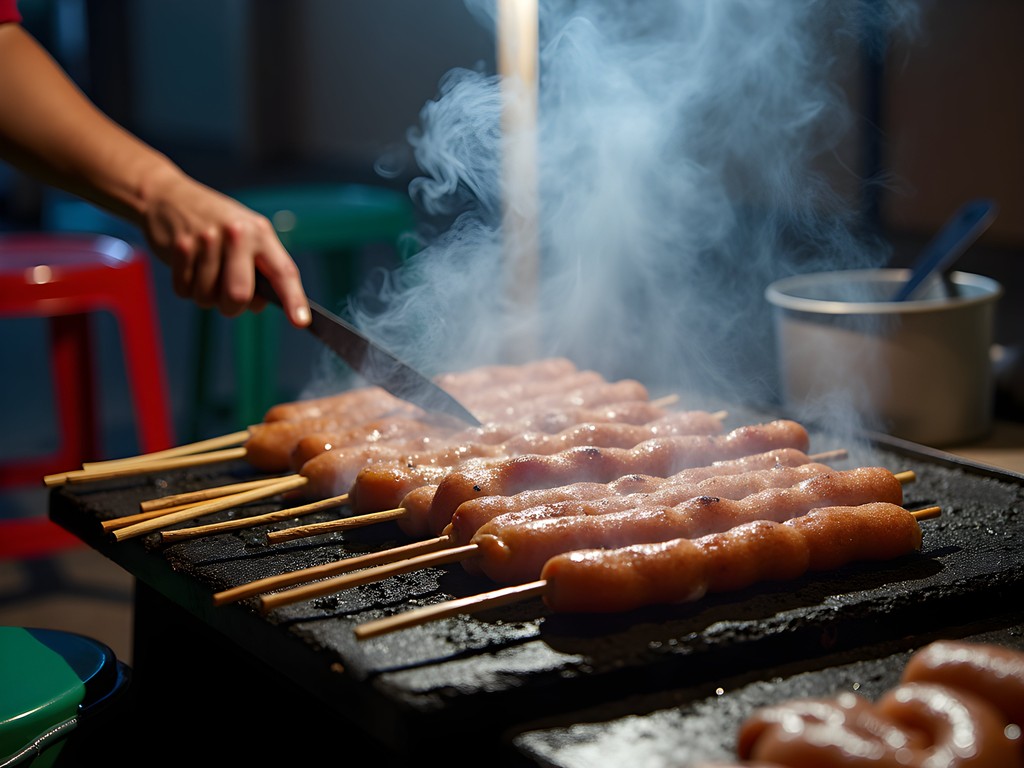
💡 Pro Tips
- Eat where you see locals eating – long lines usually indicate the best stalls
- Carry small bills (Philippine Pesos) as vendors rarely have change for large notes
- Most street food costs between 15-50 pesos per item – incredible value!
Dampa Markets: The Ultimate Filipino Seafood Experience
Growing up with a mother who insisted on selecting our fish while it was still swimming, I felt an immediate connection to Manila's dampa markets. These wet markets-slash-restaurants represent Filipino food culture at its most interactive and authentic.
The concept is brilliantly simple: you select your seafood from the market stalls (haggling expected), then bring your purchases to one of the surrounding restaurants where they'll cook it to your specifications for a small fee. It's farm-to-table with a Filipino twist – sea-to-table, if you will.
My favorite experience was at Seaside Dampa in Pasay, where I found myself negotiating for plump tiger prawns and a gleaming red snapper under fluorescent lights. The vendor – noticing my interest in less familiar items – began enthusiastically introducing me to various shellfish I'd never encountered before.
'This one,' he said, pointing to something that resembled a prehistoric creature, 'very good for soup.'
I selected a modest haul: prawns, snapper, some local clams, and – feeling adventurous – a handful of those alien-looking shellfish. I carried my treasures to a nearby restaurant called Gerry's Grill, where the staff suggested preparations for each: the prawns grilled with garlic butter, the snapper prepared sinigang style (in sour tamarind soup), and the mysterious shellfish simply steamed.
The result was one of the freshest seafood feasts I've ever experienced. The total cost? About 1,000 pesos (roughly $20) for enough food to feed three people lavishly.
Dampa visits are best experienced with a local guide who can help navigate the market negotiations and recommend cooking styles. If you're solo like I was, don't hesitate to ask vendors and restaurant staff for suggestions – Filipinos are incredibly proud of their cuisine and eager to share their knowledge.
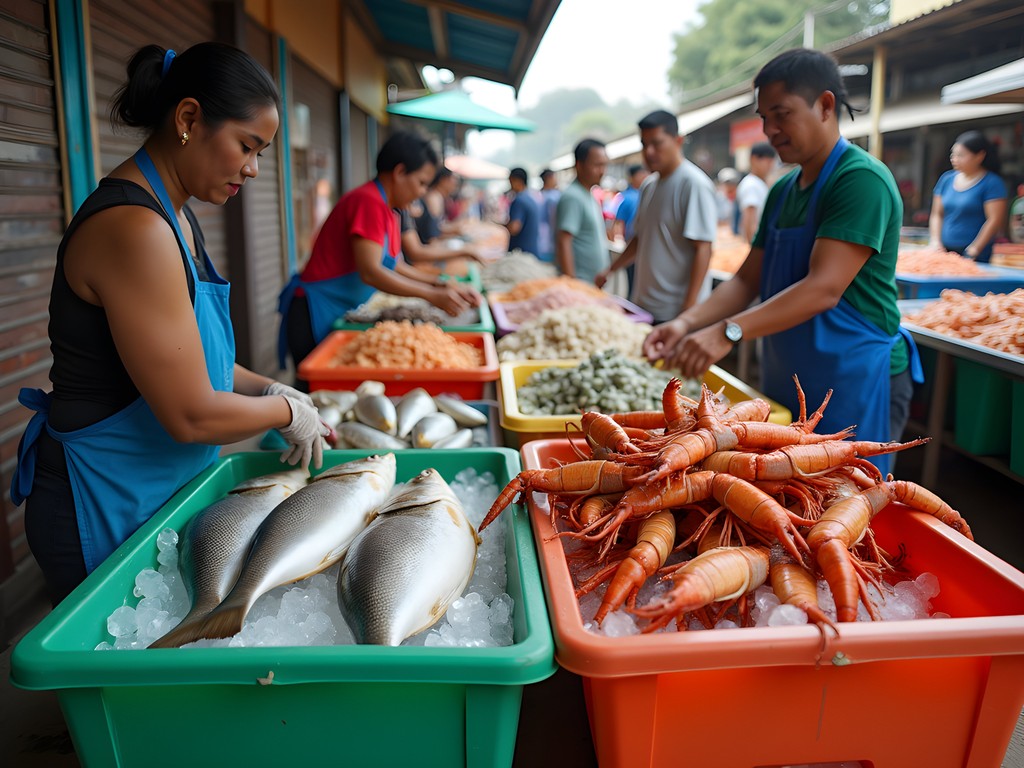
💡 Pro Tips
- Visit dampa markets in the morning for the freshest selection
- Always negotiate prices – start at about 60% of the initial asking price
- Most restaurants charge a 'cooking fee' of around 100-200 pesos per kilo of seafood
Binondo: The World's Oldest Chinatown
My hospitality background has taught me that understanding a city's immigrant communities is essential to grasping its culinary identity. In Manila, that journey inevitably leads to Binondo – the world's oldest Chinatown, established in 1594 when Spanish colonizers created a settlement for Catholic Chinese immigrants.
What makes Binondo fascinating isn't just its age but how Chinese culinary traditions have melded with Filipino flavors over centuries to create something uniquely Manila. This isn't Chinese food as you know it – it's Chinese-Filipino (or Tsinoy) cuisine with its own distinct character.
I booked a food walking tour with Ivan Man Dy's Old Manila Walks, whose 'Big Binondo Food Wok' tour came highly recommended by a Filipino chef I'd met at a conference in Nashville. Armed with comfortable shoes and my trusty crossbody bag (perfect for keeping valuables secure while leaving hands free for eating), I met my guide at the towering Binondo Church.
Over four delicious hours, we weaved through narrow streets and unmarked doorways to discover hole-in-the-wall establishments that have been feeding locals for generations. At Cafe Mezzanine – known as the 'Fireman's Coffee Shop' because profits support the volunteer fire brigade – we sampled kiampong (sticky rice with peanuts and pork) and machang (Filipino-style zongzi rice dumplings).
The highlight was New Po-Heng Lumpia House, hidden in the back of a courtyard down a nondescript alley. Their fresh lumpia – soft rice paper wrapped around a filling of vegetables, peanuts, and seaweed – was a revelation, especially when dipped in their house-made garlic-vinegar sauce. What makes it special isn't just the recipe but the setting: you eat seated on plastic stools in what feels like someone's living room, because it essentially is.
Binondo represents Filipino food culture at its most complex – layers of history, immigration, adaptation, and innovation rolled into each bite. Don't expect elegant surroundings; the best places look decidedly humble from the outside. That's part of the adventure.
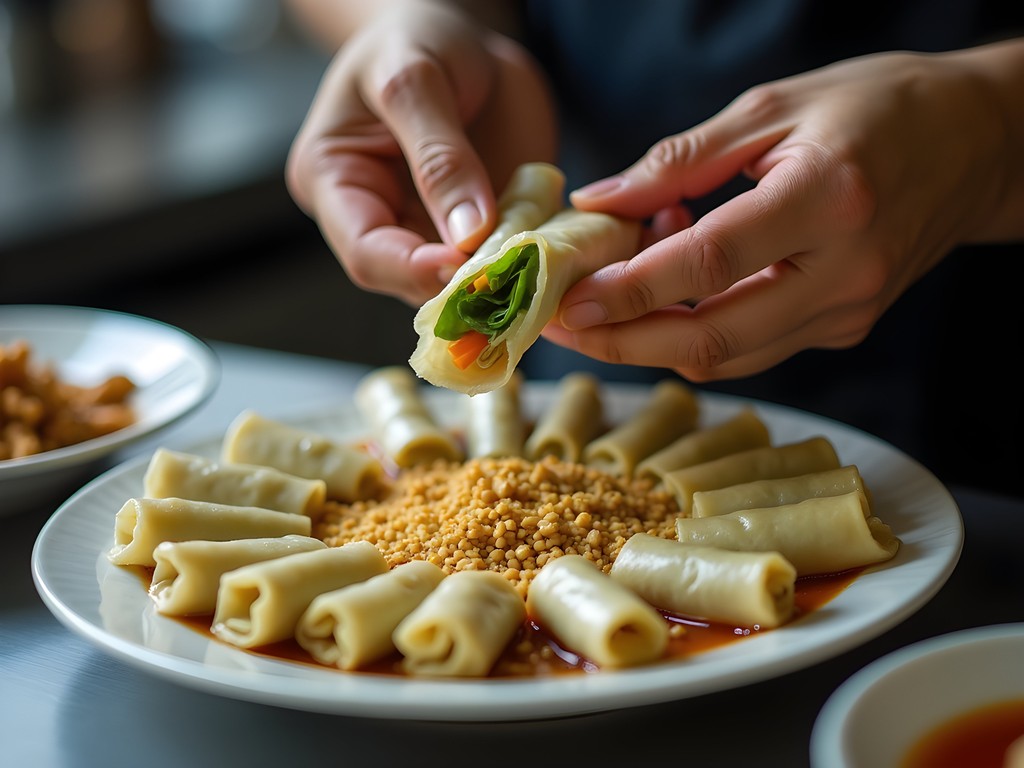
💡 Pro Tips
- Book a guided food tour for your first visit – many historical and cultural nuances are easy to miss otherwise
- Binondo is compact but confusing – download an offline map before exploring
- Many traditional shops close by 7pm – make this a lunch or afternoon adventure
Modern Filipino Cuisine: The New Wave
While traditional Filipino food stole my heart, I couldn't ignore the exciting culinary revolution happening in Manila's contemporary dining scene. Young Filipino chefs – many trained internationally before returning home – are reinterpreting their grandmother's recipes through modern techniques and presentations.
This movement, often called 'third wave Filipino cuisine,' respects tradition while pushing boundaries. It's similar to what I've witnessed in Mexico City and Bangkok – a generation of chefs reclaiming their culinary heritage with pride and innovation.
Gallery by Chele in Bonifacio Global City exemplifies this approach. Chef Chele Gonzalez (Spanish-born but Filipino at heart) collaborates with local farmers and indigenous communities to showcase Philippine ingredients in sophisticated new contexts. My seven-course tasting menu included a revelatory dish of native adlai grain served with aged kalabaw (water buffalo) cheese and fermented wild honey – ingredients that have existed in the Philippines for centuries, presented with modern finesse.
At Toyo Eatery in Makati, chef Jordy Navarra earned his place on Asia's 50 Best Restaurants list by translating Filipino cultural narratives into edible experiences. His signature dish 'Garden Vegetables' reinterprets the folk song 'Bahay Kubo' (which names 18 vegetables grown around a Filipino hut) by incorporating all 18 vegetables mentioned in the lyrics. It's playful, profound, and delicious.
What struck me most about Manila's modern Filipino restaurants wasn't just the food but the sense of purpose. These chefs are engaged in cultural preservation through innovation – documenting disappearing techniques, working with indigenous communities, and creating new appreciation for native ingredients.
For travelers, these restaurants offer an accessible entry point to Filipino cuisine, particularly if unfamiliar street food feels intimidating. Make reservations well in advance (I booked Toyo Eatery a month before my trip) and bring a travel journal to document the experience – the stories behind these dishes are as rich as their flavors.
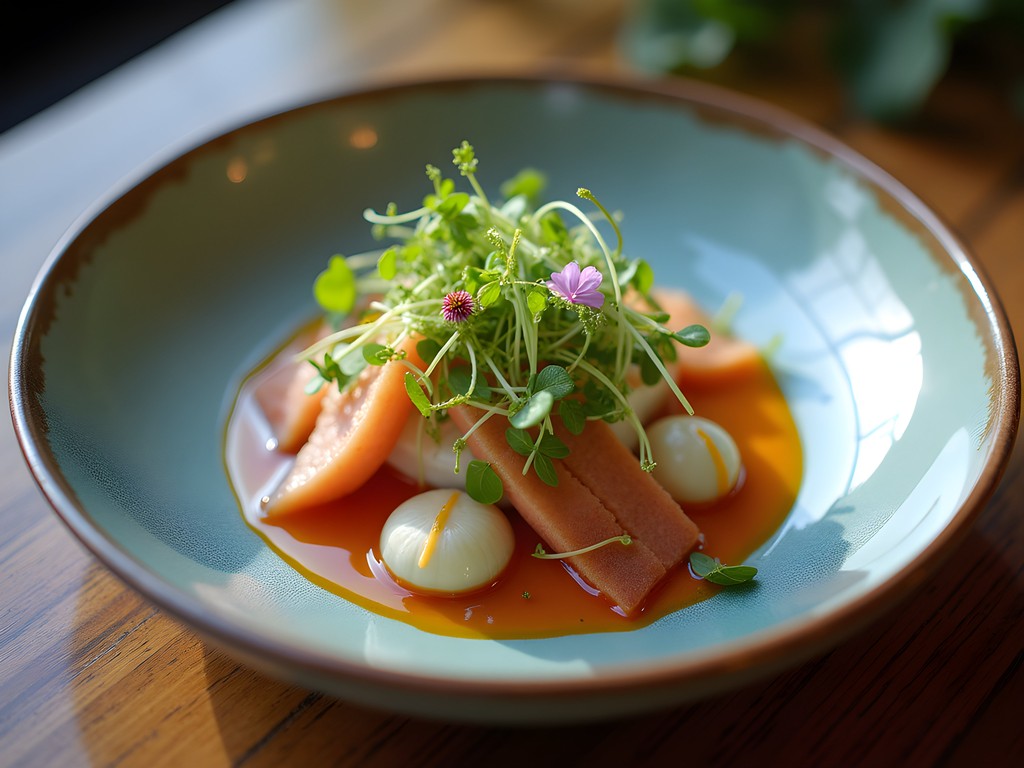
💡 Pro Tips
- Make reservations at least 2-4 weeks in advance for top restaurants like Toyo Eatery and Gallery by Chele
- Opt for tasting menus when available – they're designed to showcase the chef's philosophy
- Budget 2000-3500 pesos per person for modern Filipino dining experiences (still a fraction of comparable restaurants in Western cities)
Coffee Culture & Sweet Endings
As both a morning person and a dessert enthusiast, I've developed a theory that you can understand a culture deeply through its coffee rituals and sweet treats. Manila proved this theory spectacularly correct.
The Philippines has a fascinating coffee heritage – it was once the world's fourth-largest coffee producer before disease devastated crops in the 1890s. Today, Filipino coffee culture is experiencing a renaissance, particularly with native varieties like Barako (a strong Liberica bean with a distinctive flavor).
My coffee journey began at The Curator in Makati, which transforms from specialty coffee shop by day to craft cocktail bar by night. Their pour-over Benguet coffee – grown in the mountainous northern Philippines – had bright acidity with unexpected notes of citrus and dark chocolate. The barista explained how they work directly with indigenous farmers in the Cordillera region, paying premium prices for sustainable cultivation.
For a more traditional experience, I sought out cafes serving 'kapeng barako' the old-school way. At Café Adriatico in Malate, the strong, full-bodied brew came with a side of pan de sal (Filipino bread rolls) – a simple combination that's been starting Manila mornings for generations.
No discussion of Filipino food would be complete without mentioning the sweets. Filipino desserts reflect the culture's complex history – native ingredients like rice and coconut intermingle with Spanish techniques and Chinese influences.
At The Dessert Museum in Pasay (yes, an entire museum dedicated to desserts!), I tasted my way through classic Filipino sweets while learning their histories. Halo-halo – a colorful concoction of shaved ice, sweetened beans, fruits, jellies, ice cream and more – is a perfect metaphor for Filipino culture itself: diverse elements that somehow harmonize beautifully.
My favorite discovery was sans rival, a decadent layered dessert of buttercream, meringue and cashews that reflects the country's Spanish influence. At Mary Grace Café in Greenbelt Mall, I watched fashionable Manileños enjoy this treat alongside another Filipino specialty – ensaymada, a brioche-like pastry topped with butter, sugar, and aged cheese.
What makes Manila's coffee and dessert culture special isn't just the flavors but the social rituals around them. Filipinos use the term 'merienda' (from Spanish) for their between-meal snacks, typically enjoyed with coffee or tea. These aren't rushed affairs but opportunities for connection – something increasingly rare in our fast-paced world.
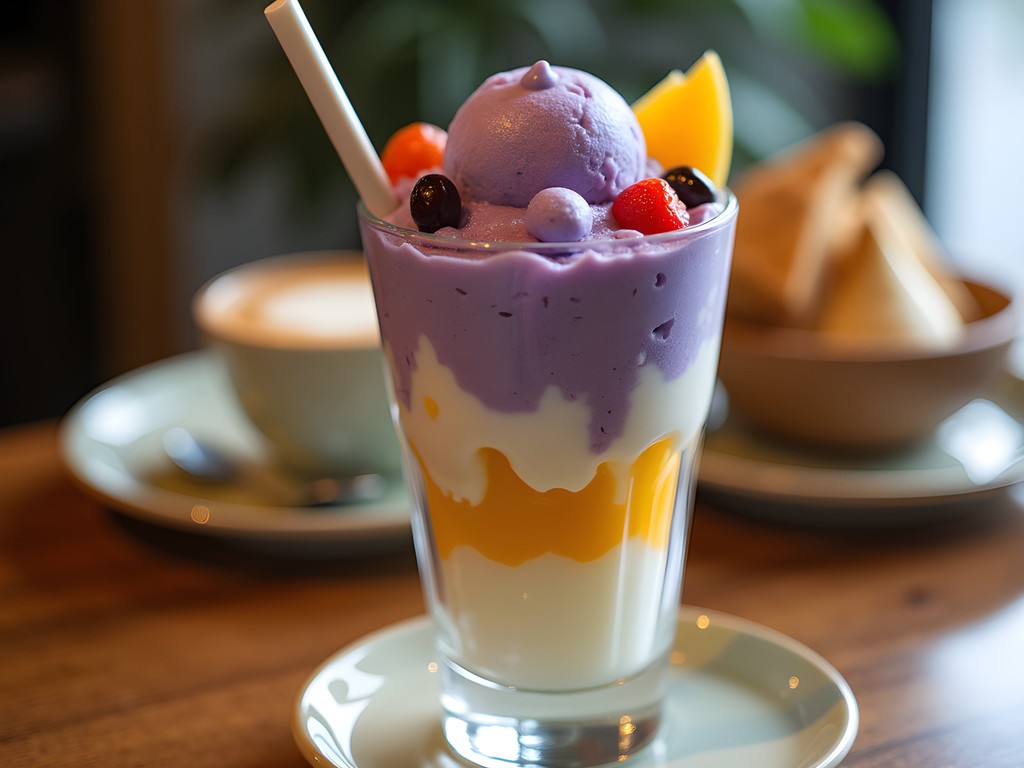
💡 Pro Tips
- Try kapeng barako at traditional cafés for an authentic Filipino coffee experience
- Order halo-halo in the afternoon when Manila's heat is at its peak – it's the perfect refresher
- Look for regional variations of Filipino desserts – each island has its own specialties
Final Thoughts
As my weekend in Manila drew to a close, I found myself at a small carinderia (local eatery) near my hotel, sharing a meal of adobo and pancit with two Filipino women who'd befriended me earlier that day. 'You must come back,' they insisted. 'You've only tasted the beginning.' They were right, of course. Manila's food scene is too rich, too complex to fully appreciate in a single visit. What makes this city special isn't just the diversity of flavors but how food serves as a living archive of Filipino history, resilience, and creativity. In a world increasingly dominated by homogenized global cuisine, Manila offers something precious – authenticity with a willingness to evolve. Whether you're slurping noodles at a street stall or savoring reinterpreted classics at a contemporary restaurant, you're participating in a cultural conversation that's been ongoing for centuries. So yes, I'll be back – with an empty stomach and an open heart. Manila's kitchens have so many more stories to tell.
✨ Key Takeaways
- Manila's food scene offers incredible value – even high-end experiences cost a fraction of Western prices
- Look beyond tourist zones to discover authentic neighborhood eateries where locals eat
- Filipino cuisine is the ultimate fusion food, reflecting centuries of cultural exchange and adaptation
📋 Practical Information
Best Time to Visit
year-round (dry season December-May preferred)
Budget Estimate
$30-50/day for food (including one upscale meal)
Recommended Duration
3-4 days minimum
Difficulty Level
Beginner


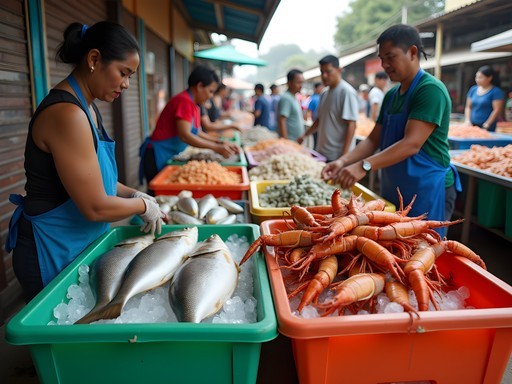






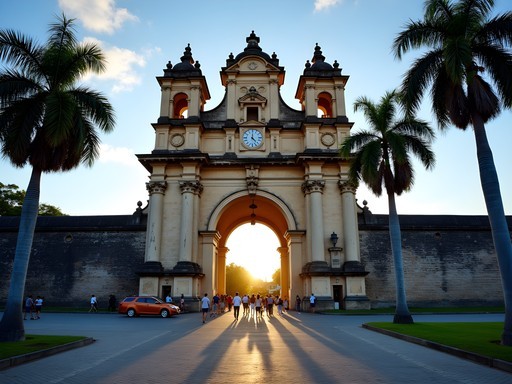


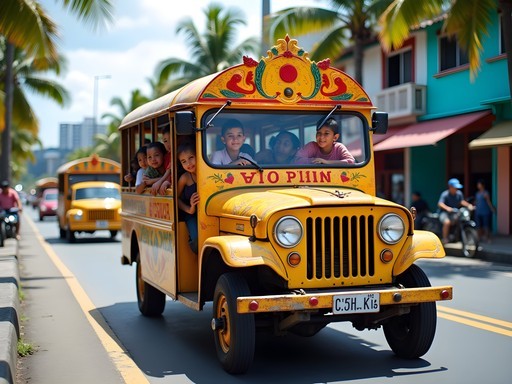
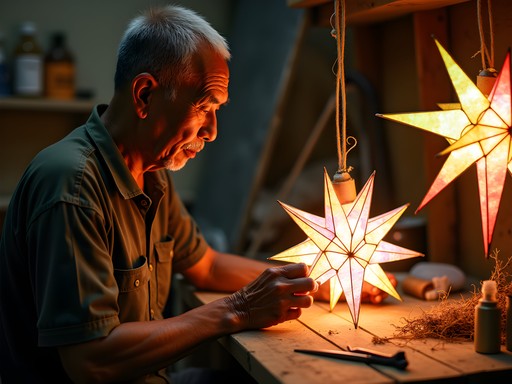
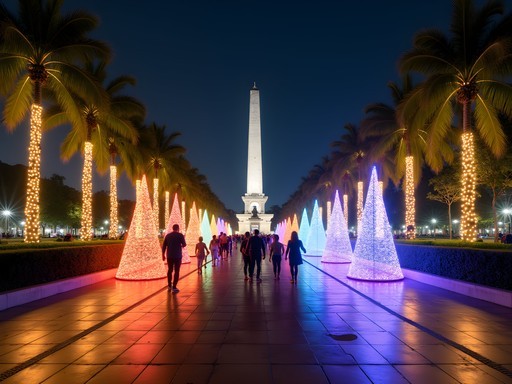
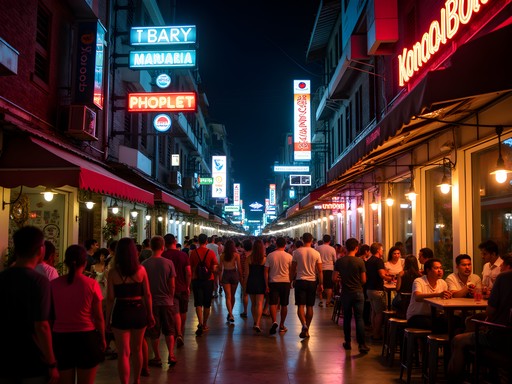
Comments
winterqueen
Is it safe to eat street food there? I'm always nervous about getting sick but everything looks so good!
Douglas Bradley
In my experience, look for busy stalls where locals eat - that's usually a good sign. I've eaten street food throughout Southeast Asia with few issues. Just bring hand sanitizer and stick to cooked foods if you're particularly concerned.
winterqueen
Thanks for the advice! That makes me feel better about trying it.
greenadventurer
Those street food prices are unbelievable! 🤯
Casey Andersson
Riley, your article brought back such vivid memories of my time in Manila! Last year, I splurged on a private food tour through Binondo that changed my entire perspective on Filipino-Chinese cuisine. Our guide took us to this hidden courtyard restaurant where they've been making hand-pulled noodles the same way for four generations. The contrast between these traditional spots and the sleek modern Filipino restaurants in BGC is what makes Manila's food scene so dynamic. For luxury travelers, I'd recommend adding Toyo Eatery to your list - their contemporary take on Filipino classics earned them a spot on Asia's 50 Best Restaurants, and the tasting menu tells such a beautiful story of the Philippines through food.
adventurestar
Just booked my tickets to Manila after reading this!!! Can't wait to try everything you mentioned. I'm bringing my Pocket Filipino Phrasebook to help navigate the food stalls. Any must-try dishes besides what you mentioned in the article?
greenadventurer
Try kare-kare! It's this amazing peanut stew with oxtail. And don't miss halo-halo for dessert!
starpro
OMG that sisig looks AMAZING!! 🤤🤤 Filipino food is so underrated! I'm definitely adding Manila to my travel list just for the food scene. That section about modern Filipino restaurants was eye-opening!
photolover
Your food photos are making me hungry! Which neighborhood would you recommend staying in to be close to the best food spots? Planning a trip in January.
Riley Nichols
Makati or BGC are great central locations with tons of options, but for a more local experience, I loved staying near Poblacion - amazing street food and trendy restaurants in one area!
photolover
Thanks! Poblacion sounds perfect for what I'm looking for.
Douglas Bradley
Riley, your piece captures Manila's culinary complexity beautifully. During my research visit last year, I found Binondo to be a fascinating cultural crossroads where Chinese culinary traditions have evolved alongside Filipino flavors for centuries. For those planning to visit, I'd recommend starting at Ongpin Street early in the morning when the lumpia vendors are just setting up. The historical context of how these immigrant communities shaped Manila's food landscape is something I explore in my upcoming book. Did you notice how distinct Manila's Chinatown dishes are compared to other Asian Chinatowns?
Riley Nichols
Thanks Douglas! Absolutely - the evolution of Chinese dishes in Binondo is fascinating. The panciteria culture there is unlike anything I've seen in other Chinatowns. I found the integration of local ingredients into traditional Chinese recipes particularly interesting. Your book sounds fascinating!
smartstar
I was in Manila last month and totally agree about the food scene being underrated! Those dampa seafood markets are the real deal - we went to the one in Pasay and got to pick our own crabs. The garlic butter sauce they made was INSANE. Did anyone else find the balut vendors? I couldn't bring myself to try it but my boyfriend did and actually liked it!
Casey Andersson
Balut was definitely an experience! I actually documented my first (and last) taste on my Instagram. The dampa markets are magical though - nothing compares to picking your seafood and having it cooked exactly how you want it.
smartstar
Haha brave! I'll check out your IG. The dampa experience was definitely a highlight.
mountainblogger3135
Great post! I'm heading to Manila next month for work but will have weekends free. How did you get around to all these food spots? Is public transportation reliable or should I just budget for Grab/taxis? Also, any specific dishes you'd recommend for someone who doesn't handle super spicy food well?
Riley Nichols
I mostly used Grab - super convenient and not too expensive. For non-spicy options, try adobo, pancit, and sinigang - they're flavorful without much heat. Sisig can vary in spiciness, so ask before ordering. Enjoy your trip!
mountainblogger3135
Thanks so much for the tips! Looking forward to trying adobo especially - heard so much about it!
happymaster
Great post! I'm heading to Manila in December for just 3 days. If you had to pick ONE area for the best food experience, would you go with Binondo or the Dampa markets? Also, any specific dishes I absolutely shouldn't miss?
coolace
Not the author but I'd say Dampa if you love seafood! The experience of picking your own fresh catch and having it cooked is unbeatable. Must try the chili crab!
happymaster
Perfect, thanks! I do love seafood so Dampa sounds amazing. Adding chili crab to my list!
Venture X
Premium card with 2X miles, $300 travel credit, Priority Pass